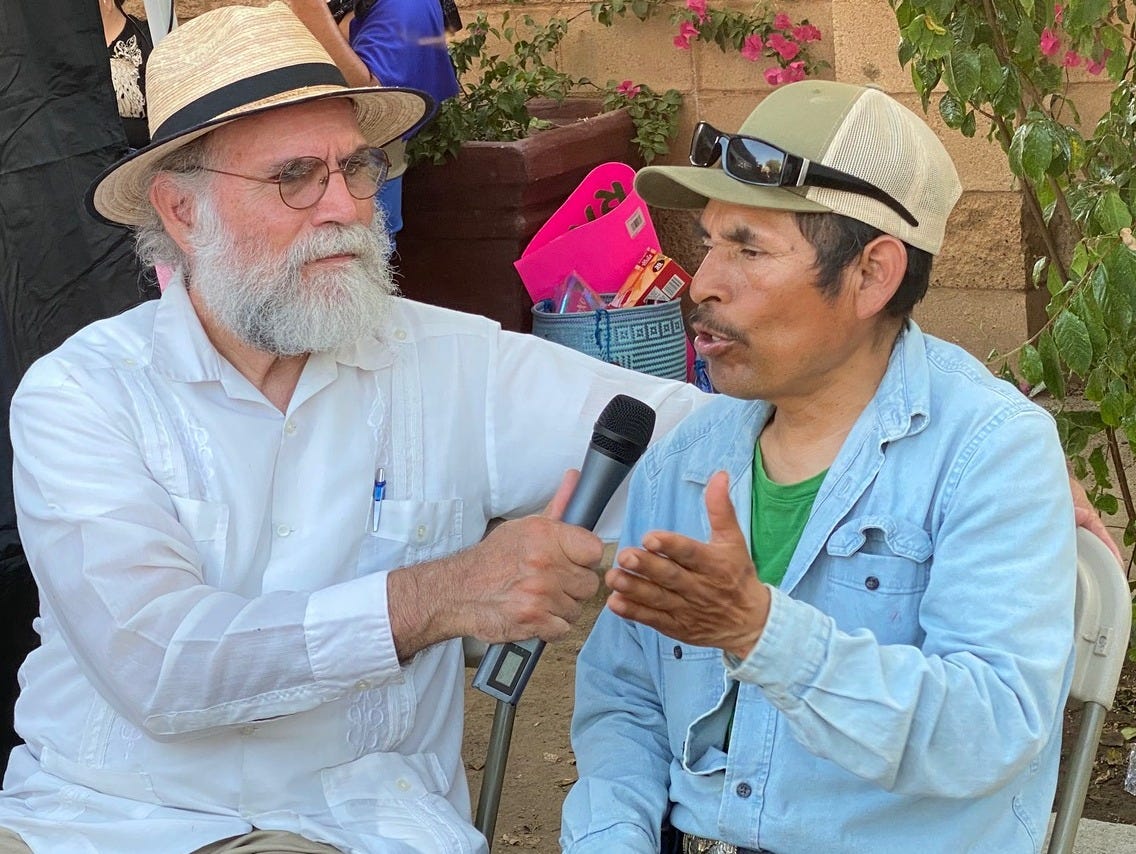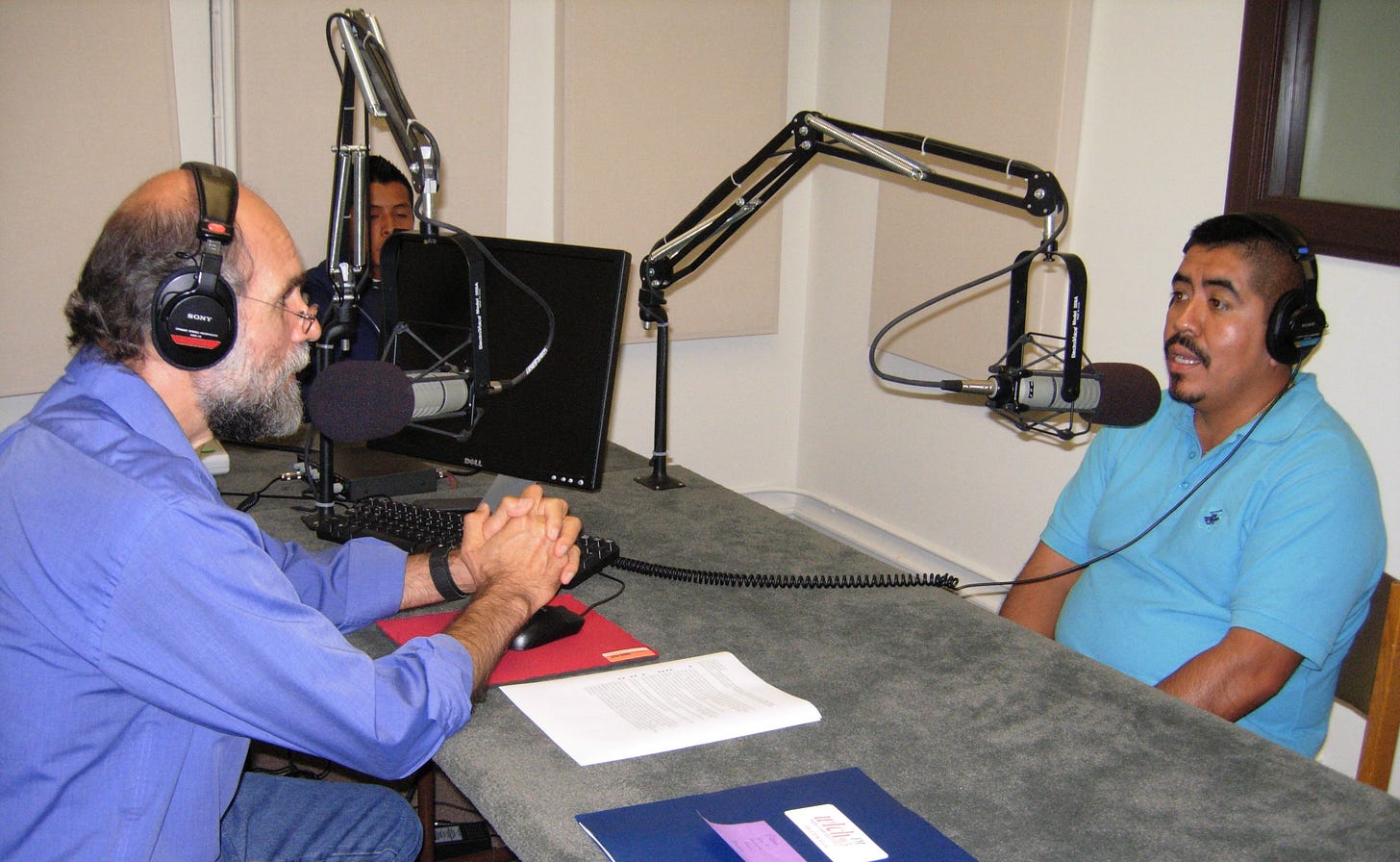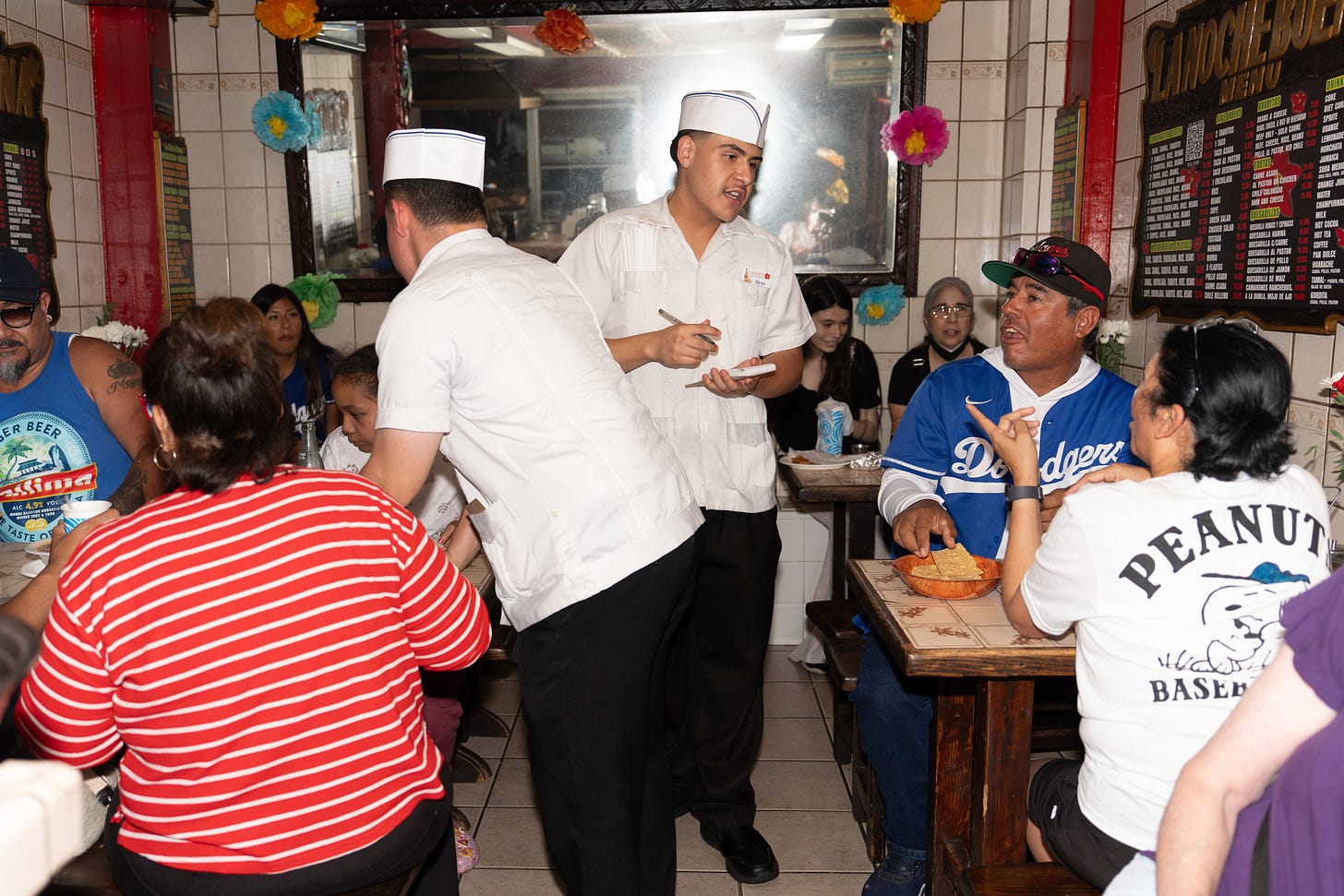Radio Bilingüe, the Voice and Sound of "A People Without Borders"
Also in this edition: The film community shows solidarity with immigrants and Palestinians. A perfect storm in the Mexican countryside. Poniatowska recalls her conversations with Cortázar.
Lea La Jornada Internacional en español aquí.

Overcoming a Climate of Fear: A Mission for this Network
In the anti-immigrant climate of the United States, the work of Radio Bilingüe is key to overcoming fear and breaking the silence that isolates the most vulnerable. The independent community radio network is celebrating its 45th anniversary on the air, continuing its mission to give a bilingual—and sometimes multilingual—voice to those who are rarely heard: farmworkers, immigrants, Indigenous people, the incarcerated, the poorest, and young people across the western and southern United States. Around half a million people tune in to its programming each week.
“We take the opportunity to emphasize on air the importance of rights during searches, the right to remain silent [when confronted by authorities], and the right to due process,” explains Samuel Orozco, News Director, in an interview with La Jornada. “That’s the work we’re focused on right now—educating people about ‘know your rights,’ and encouraging them to exercise those rights, especially now that we’re being stopped in the streets by armed, masked squads who claim to be police and spread terror in our communities.”
Orozco adds, “One of the challenges we face as journalists is overcoming this atmosphere of fear. That means sharing information so that an informed community is better equipped to overcome fear by having some understanding of what’s actually happening.” He continues, “We try to highlight all kinds of actions and gestures that push back against these anti-immigrant tactics, to keep the flame of hope alive among our listeners. And not just hope—to inspire people to take action, to go out and do something for themselves.”
Radio Bilingüe is an independent public radio network with 30 stations of its own, and its programming is broadcast through an additional 70 stations, reaching communities from California to Texas, as well as in New Mexico, Colorado, Oregon, Arizona, and Idaho.
The sounds and voices of Radio Bilingüe break down borders. Its programming is also binational, with several of its stations located along the U.S.-Mexico border. “So there are no borders... We float over the crocodile pit,” Orozco jokes. In Mexico, Radio Bilingüe’s content is broadcast in parts of Oaxaca, and on stations in Hermosillo and Ciudad Acuña.
“Unlike many corporate media outlets, at Radio Bilingüe we don’t see listeners as consumers of commercial products,” Orozco explained in an interview a couple of years ago. “For us, listeners are citizens who often participate in our programs as grassroots reporters—like during the massive marches—or as political analysts, frequently engaging on equal footing and contributing to a critical, inquisitive approach to public issues. They help shape opinion.”
This approach may help explain why Radio Bilingüe is the largest Latino radio network in the United States. It has been recognized and supported by institutions such as the National Endowment for the Arts and the MacArthur Foundation for its vital community role. In 2023, Radio Bilingüe co-founder Hugo Morales, who is Mixtec, became the first Indigenous Mexican to receive an honorary doctorate from Harvard University (where he also earned his law degree.)
Another key mission of Radio Bilingüe is to provide information on social and political struggles and debates in Mexico. The station reports on events and conducts interviews from within the country. For example, in May, they interviewed La Jornada opinion editor Luis Hernández Navarro about the teachers’ movement.

The Quote:
Of all our feelings the only one which really doesn't belong to us is hope. Hope belongs to life, it's life defending itself.
-Julio Cortázar
In Case You Missed It

◻️ We must not be indifferent. The Mexican film industry and community must not remain indifferent in the face of the climate of hostility and persecution against migrants in the United States and the genocide in Gaza, says Armando Casas, president of the Mexican Academy of Cinematographic Arts and Sciences. “We are living through one of the most dangerous moments in history,” he states, adding that during the upcoming Ariel Awards ceremony, the Academy will take a critical stance on these and other pressing issues.
◻️ Great Mayan Jungle Biocultural Corridor. The governments of Mexico, Guatemala, and Belize have signed an agreement to protect and preserve the Mayan Jungle—a 5.7-million-hectare area shared by the three nations and the second-largest natural reserve in the Americas after the Amazon. Víctor M. Toledo outlines five ideas for how local governments can harness the biocultural potential of Mayan communities, whose culture dates back over 3,000 years!
◻️ Perfect storm. Mexico’s countryside is facing a perfect storm: growing demand for food and dwindling capacity to produce it, with shrinking farmland and fewer available resources, warn researchers from Mexico’s National Institute of Agricultural Research. At the same time, the Bank of Mexico reports that more than two years after the closure of the National Institute of Development Finance, which used to fund agricultural activities, private banks have yet to step in and increase financing to the sector.
◻️ Sun Ra Arkestra: intergalactic music. Jazz wasn’t born on Earth; rather, it’s a stellar fire turned into sound. So what does intergalactic music mean? In the case of Sun Ra, it’s not an escapist journey but a rebellion against the most backward aspects of terrestrial society—a direct action against racial segregation and homophobia.
◻️ Plan or perish: Mexico facing global reindustrialization. “In light of the U.S. reindustrialization project and the review of the USMCA, Mexico must rebuild its own productive apparatus,” advises José Romero. “The treaty limits subsidies, strategic public procurement, and temporary protection—the very tools we need.” He argues that Mexico requires strong development banking, protection for emerging sectors, and value chains built with domestic capital. Opportunities lie in steel, agro-industry, generic pharmaceuticals, and auto parts. Regarding these points and the news that U.S. companies’ investment in Mexico has remained around 40 percent of total foreign capital this century, Enrique Dussel Peters sees the possibility of a new global economic order.
◻️ Photographer Maritza López and her need to provoke. “I like to play with what’s normal—I don’t like being too ordinary. I’ve always had this intention to push boundaries a little,” explains the photographer. This drive has made Maritza López one of Mexico’s most unique photographers.
◻️ A conversation with Julio Cortázar: Elena Poniatowska fondly remembers her talks with Julio Cortázar.
◻️ The Revueltas family: artists and rebels. The paintings, scores, photographs, books, prints, posters, films, and documents on display at the Museum of Modern Art form a diverse melting pot of the artistic, social, political, and cultural contributions of four of the twelve Revueltas siblings.
◻️ “I listen to stories through the camera”: John O’Leary. The National Institute of Anthropology and History (INAH) honors the photographer for combining documentary rigor with artistic sensitivity.
🎥 What we're watching
Laura Esquivel and the novel that can be read, listened to, and watched, on Palabras Cruzadas.






